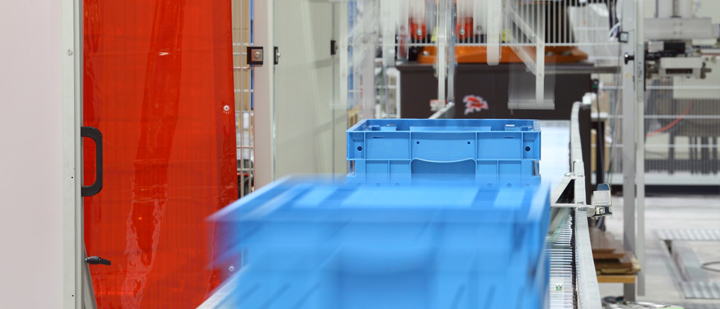The development process of automated material flow systems involves many different professional fields and backgrounds (mechanical engineering, electrical engineering, etc.) in parallel or one after another. The different project partners use different tools and modelling techniques for the same system in order to depict its diffent relevant properties. Each partner has his own view on the project, limited to those aspects of the projects that are relevant for the solution of his owhn tasks. All other aspects are not visible for him.
Rectifying errors in automated material flow systems during installation causes a large effort due to the number of involved project partners and dependencies. Thus, the challenges of the development process are an efficient cooperation between different partners as well as an early recognition of planning conflicts during the development phase. A direct and automated interface between the models used for the development usually does not exist, meaning that changes in one model cause manual changes in other models, which then again can lead to further adaptions. Due to the number of involved partners and models, it is difficult to forecast and handle the complexity of these relations. Furthermore, relations are usually not or not formally described. This often yields unrecognized inconsistencies between the elements of different models, e.g., for a conveyor between the element "maximum conveying velocity" in a model "planning of materials handling devices" and the element "throughput" in a model "system performance".
The manual transferring steps between different development phases are reduced by using automated transformations based on a Virtual Single Underlying Meta Model (V-SUMM). This approach is not supposed to automatize the planning, but to support humans in the planning process by showing only the relations that are relevant in the current context of work.
Furthermore, this procedure reduces the number of errors in the development of automated material flow systems. Errors that can be caused by inconsistencies are for example misunderstandings in the communication or in the transfer of model information to other models.
Finally, the V-SUMM approach determines which further model elements have to be tested and possibly adapted after a change.
The project is organized in 5 phases, distributed over a duration of two years. Interviews in phase 1 help to gain knowledge about current working steps within the development of automated material flow systems in the industrial practice. Relevant views on the system are selected and then, in phase 2, are analyzed in order to classify possibly occuring inconsistencies. In phase 3, a Virtual Single Underlying Meta Model (V-SUMM) for automated material flow systems is developed and the tested with a demonstrator and and example use case. The so-generated use case is expanded step by step in phase 4 so that requirements from industrial practitioners can be represented. In phase 5, the modelling approach is evaluated by expert interviews.
